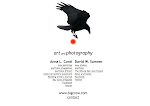
I'm finding it hard to write about photographs or photography in general right now. I've tried to come up with short bits once a week, but I'm finding that to be no easier. I suppose that's why I photograph in the first place, because I just don't have that much to say, at least that much worth writing down that would be of interest to anyone but myself.
I'll keep trying, but I may lean a little more toward the news than the notes for a while.
Recently a few people have commented that my photographs look old, and not just because of the warm tone. They have said they look old as if they are of another time. Most of my subject matter is still, unmoving and of common things, often timeless things, like a tree. Maybe I choose subjects that might seem "old fashioned" to current sensibilities. I do seek out stillness and the familiar in that stillness. Maybe that in itself is old fashioned.
Photo: ©2008 David W. Sumner






















